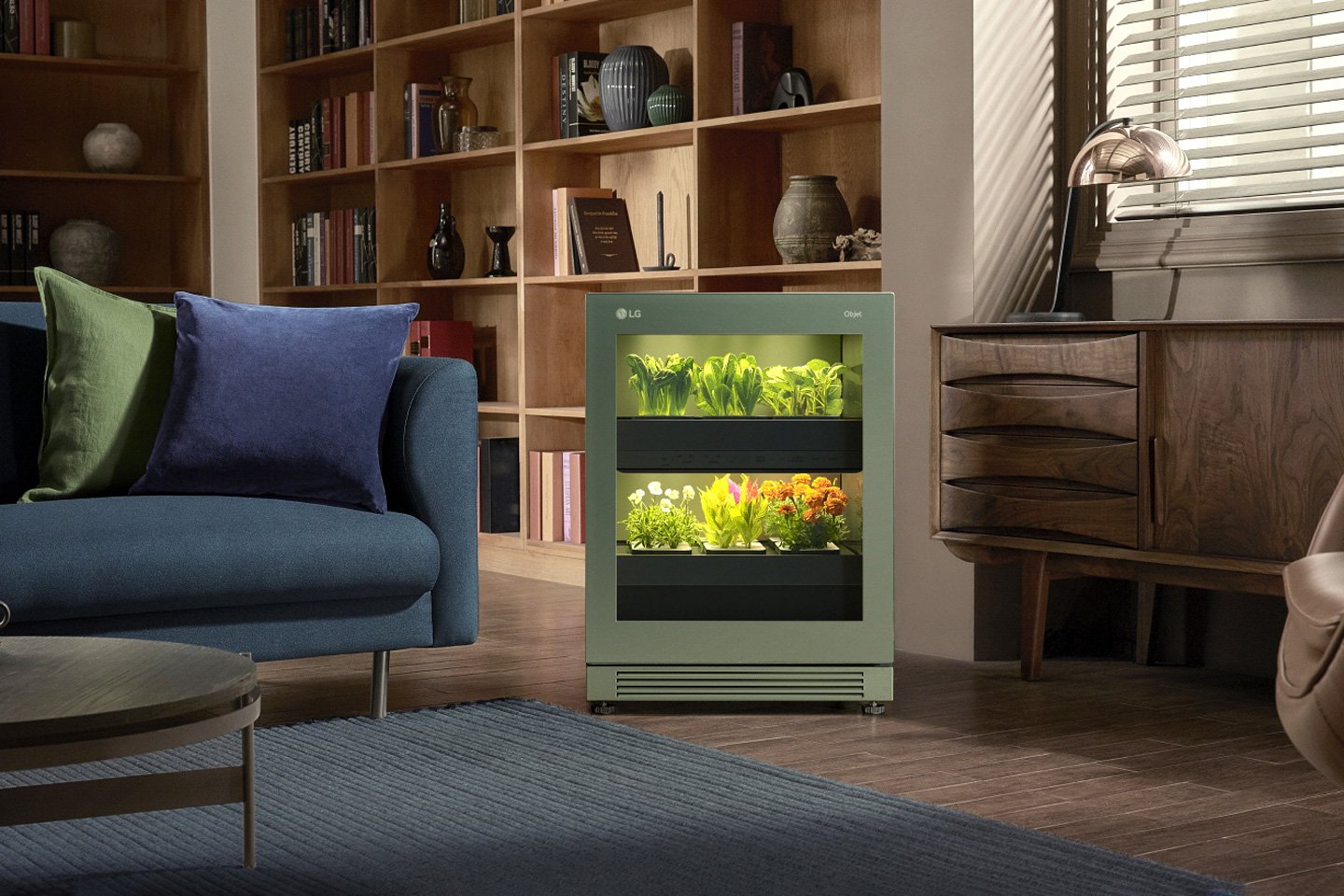
Gardening is an extremely therapeutic activity, and though I may not engage in it all the time, the few times that I have, I found it really delightful and soothing. Growing, tending to, and being surrounded by plants is intensely satisfying. All your worries slowly fade away, and you are simply enthralled by nature. And indoor gardening has become one of the major trends these days! Plants can truly transform a living space with their gentle presence. They add a touch of green and nature and create a serene and zen atmosphere. But tending to them is not the easiest task always! You need to pay special attention to your beloved plants and give them the best care to ensure that they grow well. And, we’ve curated a whole collection of product designs to help you with that! From a wearable that lets your plants communicate with you to LG’s latest indoor gardening appliance – these products are all, you need to create a nurturing environment for your plants and ensure they grow beautifully!
1. LG’s tiiun
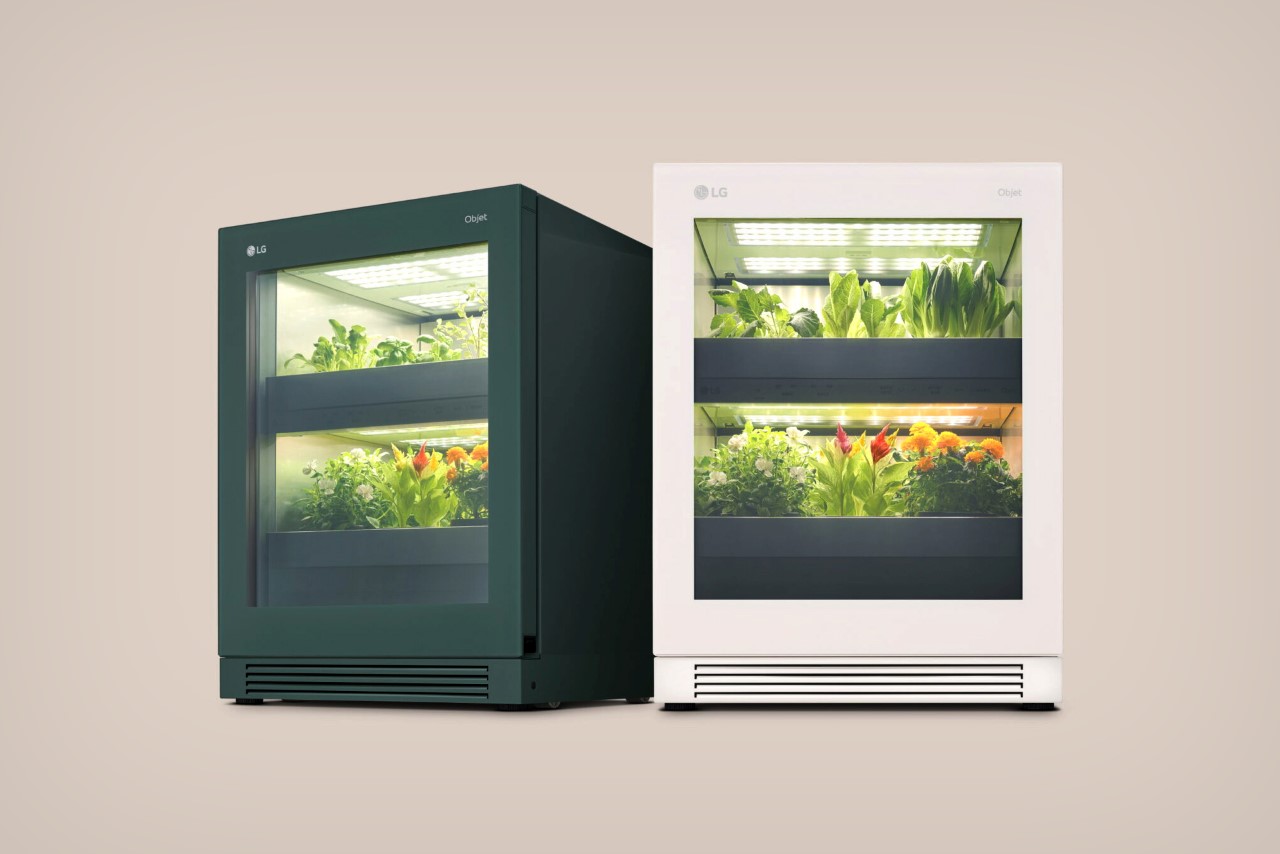
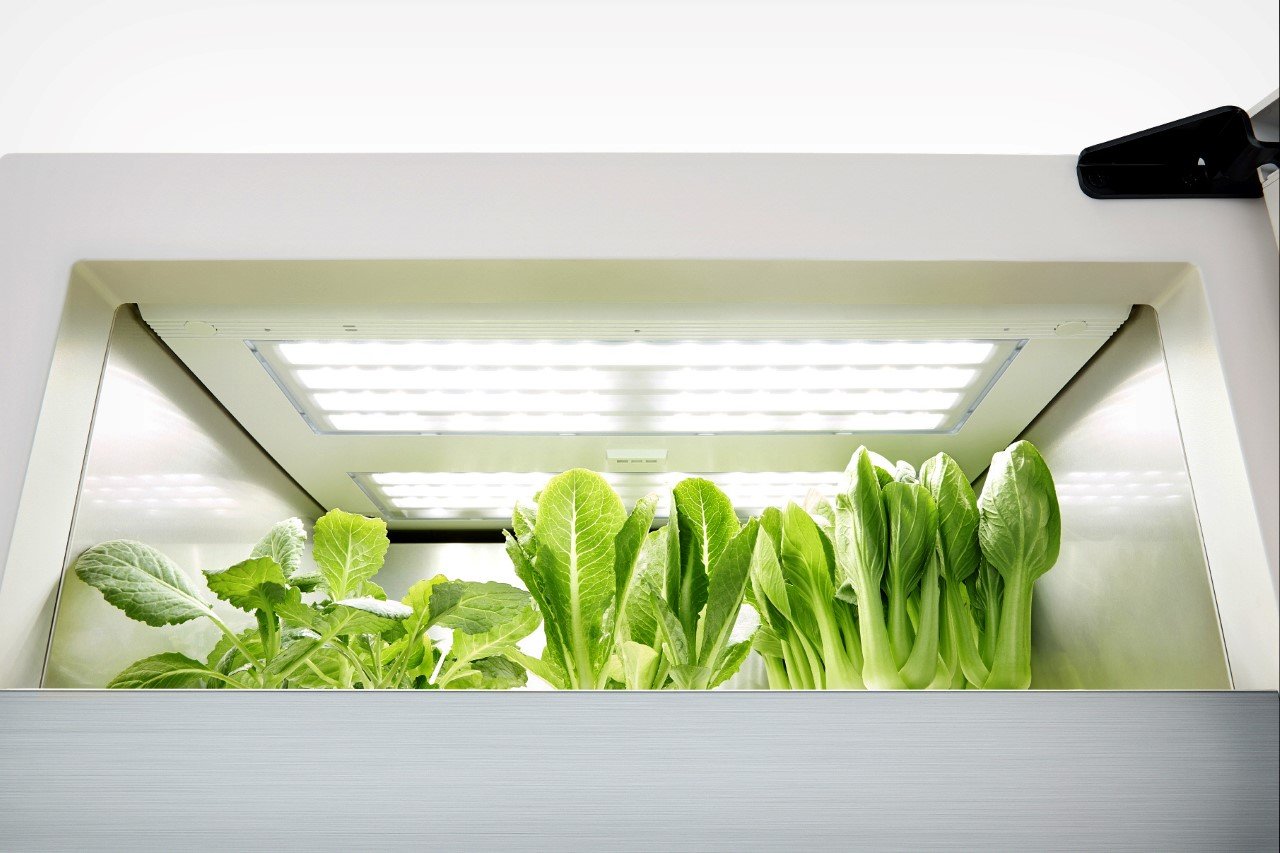
Sure, a refrigerator can keep your veggies fresh… but LG’s tiiun can keep it fresher! Designed as a unique home appliance that lets you grow your own herbs and veggies the LG tiiun was announced in the run-up to CES 2022. The indoor gardening appliance is roughly the size of a dorm refrigerator, standing at approximately 3 feet tall, and features two shelves that can accommodate up to 6 all-in-one seed packages and various seed kits.
Why is it noteworthy?
The term tiiun comes from the Korean word meaning ‘to sprout’ and is LG’s way of indicating that this appliance is an all-in-one self-sufficient garden. The appliance creates a perfect microclimate and all the right conditions for the plants to grow, even mimicking light cycles so you could potentially keep your tiiun anywhere in a room without worrying about access to proper sunlight. LG’s Flexible Weather Control System creates the ideal situations for organic growth while also keeping pests at bay. An internal watering system also delivers water to the plants (8 times a day) to keep them hydrated. All you really have to do is install the tiiun and sit back while your plants grow on their own!
What we like
- A foolproof way to grow your own veggies and herbs in the comfort of your home
- Fun and simple even for those with no gardening experience
What we dislike
- The form is a bit too bulky for homes with space constraints
2. The Ocean Sun Plant Light

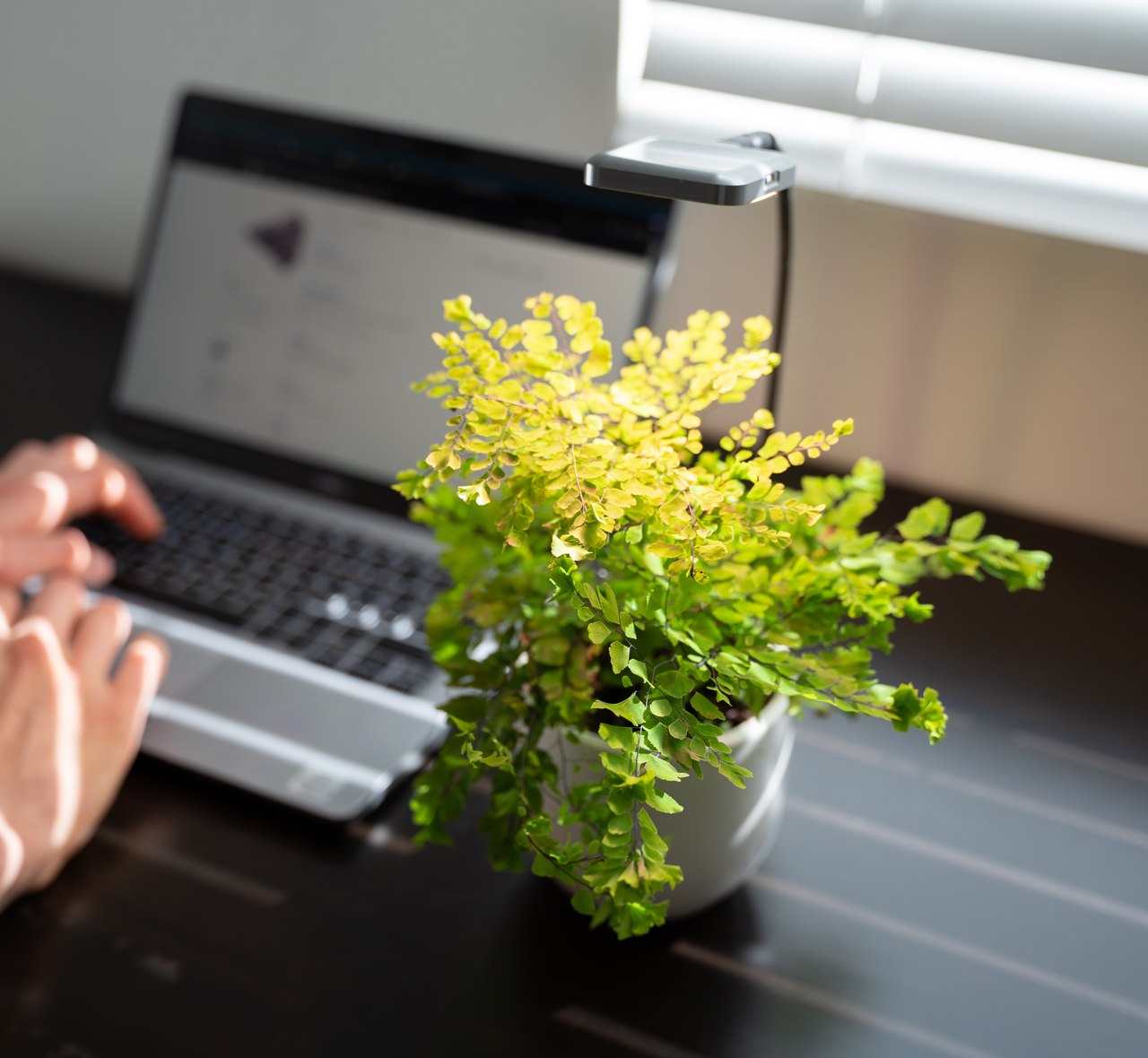
Designed to be more than just your average USB-powered work light, the Ocean Sun Plant Light, as its name quite aptly suggests, features a calibrated set of LEDs that emit light similar to the light from the sun. Made primarily for indoor plants that don’t receive too much natural light, the Ocean Sun Plant Light provides them with the right spectrum of light to enable photosynthesis and foster growth… and unlike the sun, it can fit in your palm.
Why is it noteworthy?
The Ocean Sun sports a sleek, compact design with a precisely machined aluminum outer shell and a series of flicker-free LEDs that draw power from a USB-C port located on the back of the device. Each lamp comes along with its own adjustable USB-C stand cable that lets you position and angle the lamp however you want, although the Ocean Sun works with any third-party cable too, giving you the freedom to hook it up to your laptop, a power bank, or even a set of solar panels with a USB output!
What we like
- Compact form that fits in your palm
- High end flicker free LEDs
What we dislike
- Not too sure how well plants would grow with this light
3. Paradise
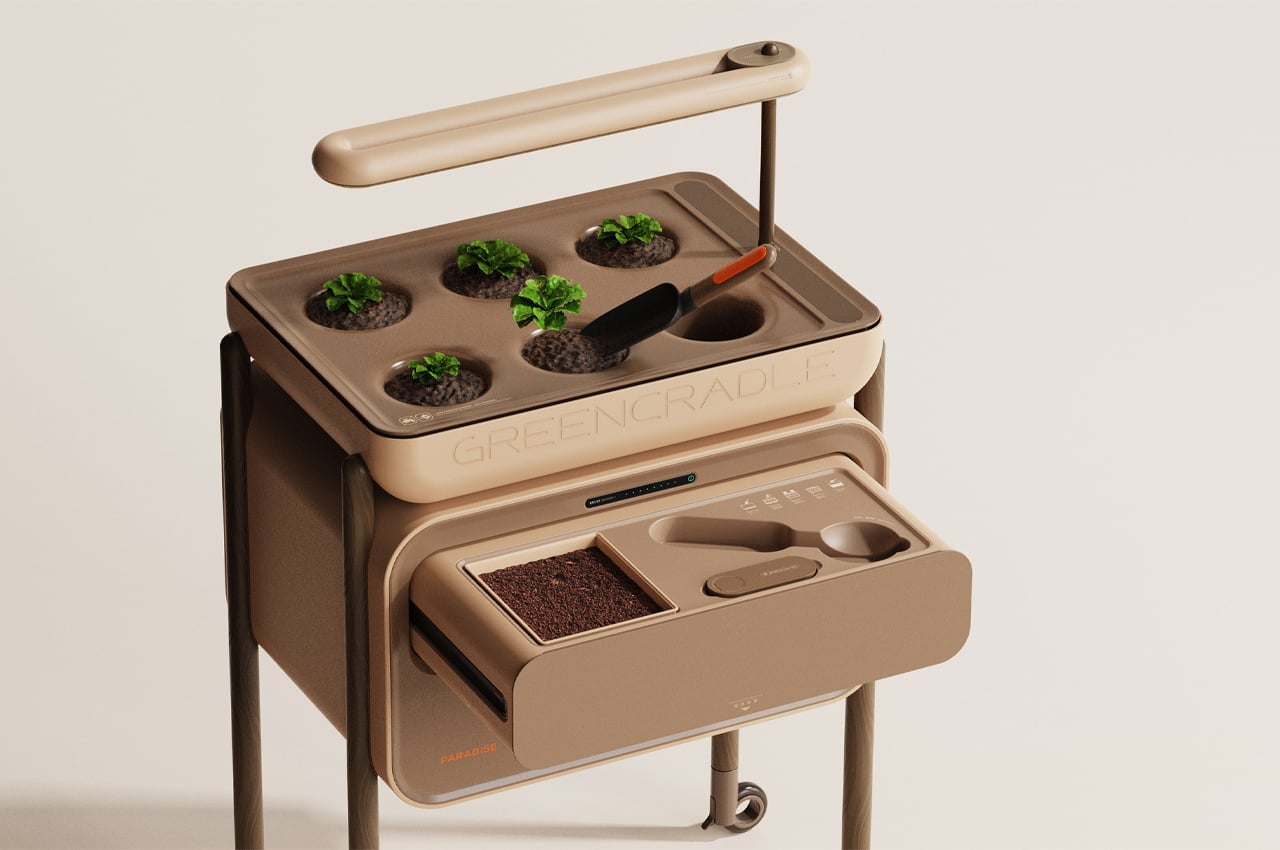
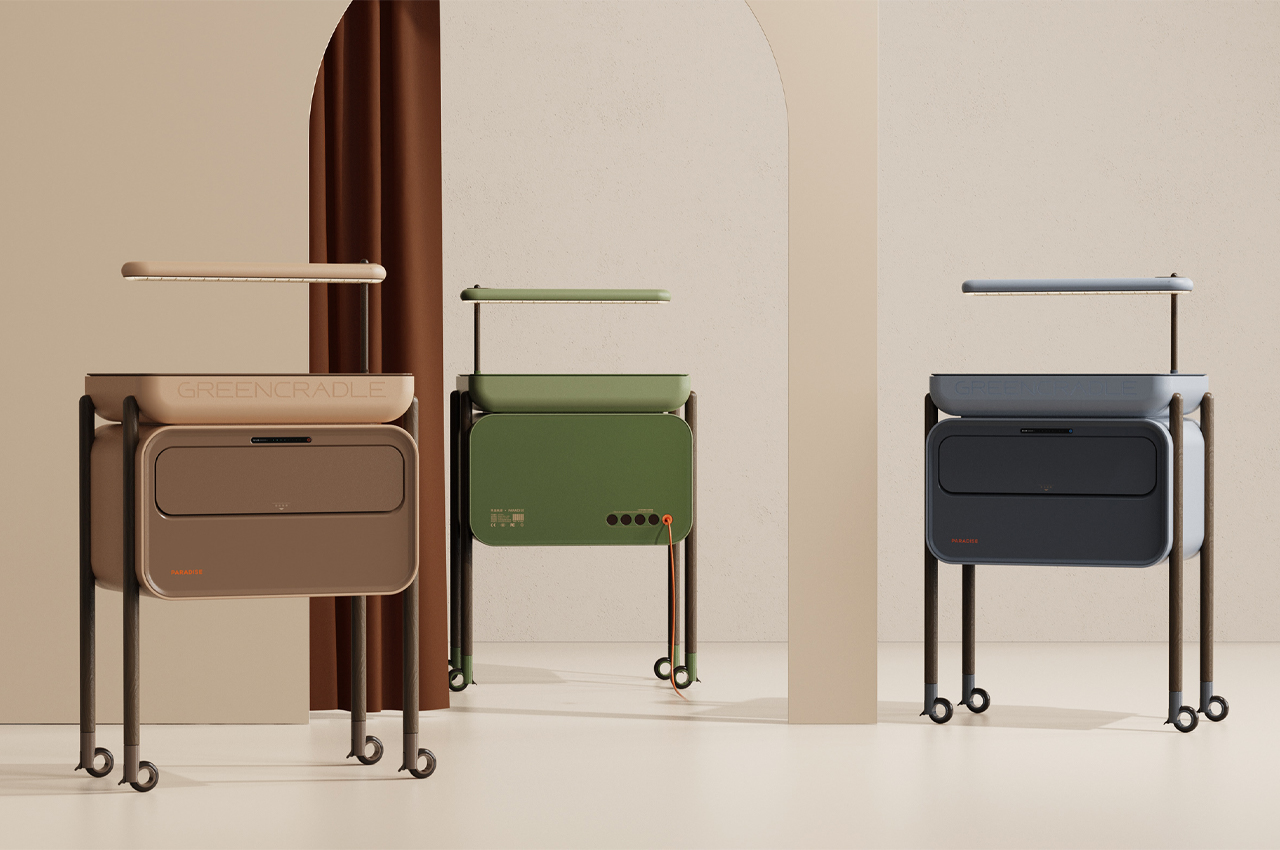
Designed to reduce domestic waste, Paradise is an automated plant cultivator and compost bin that uses integrated technology to prompt users when the compost or plants need tending. Conceptualized as a rolling cart, Paradise is comprised of modular pieces that work together to provide optimal conditions for growing plants. Starting from its top, Paradise features an LED strip that pours artificial sunlight over integrated planters located on top of Paradise’s first module.
Why is it noteworthy?
While spending more time at home has brought some much-needed rejuvenation to our interior design, it has also contributed to a global increase in domestic waste. Inspired to change that, designer Robin Akira created Paradise, a household plant cultivator with integrated compost bins and an odor-sealing lid to make use of and reduce our domestic waste.
What we like
- Integrates greenery into our interior spaces
- An odor-sealing lid
What we dislike
- Could be messy to have such a design in our indoor living space
4. Jungle
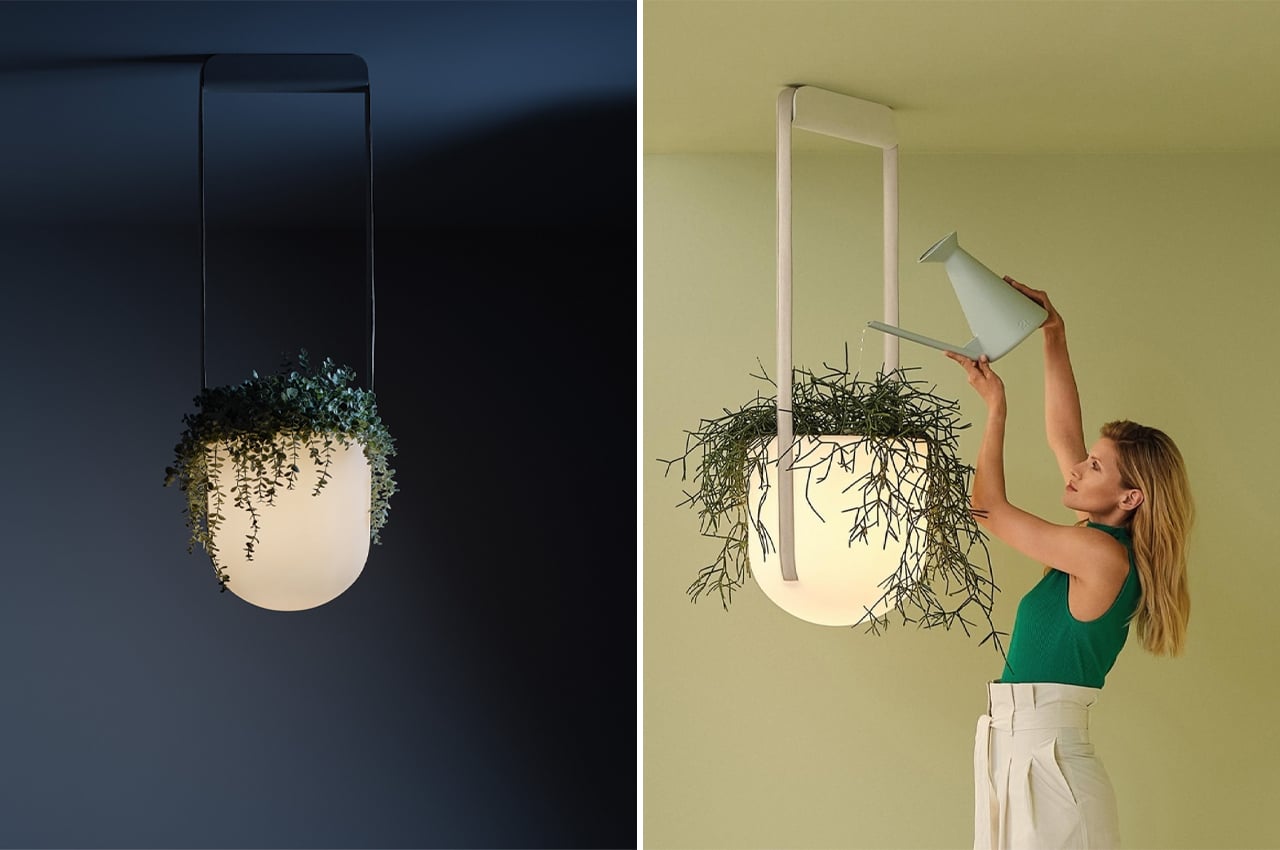
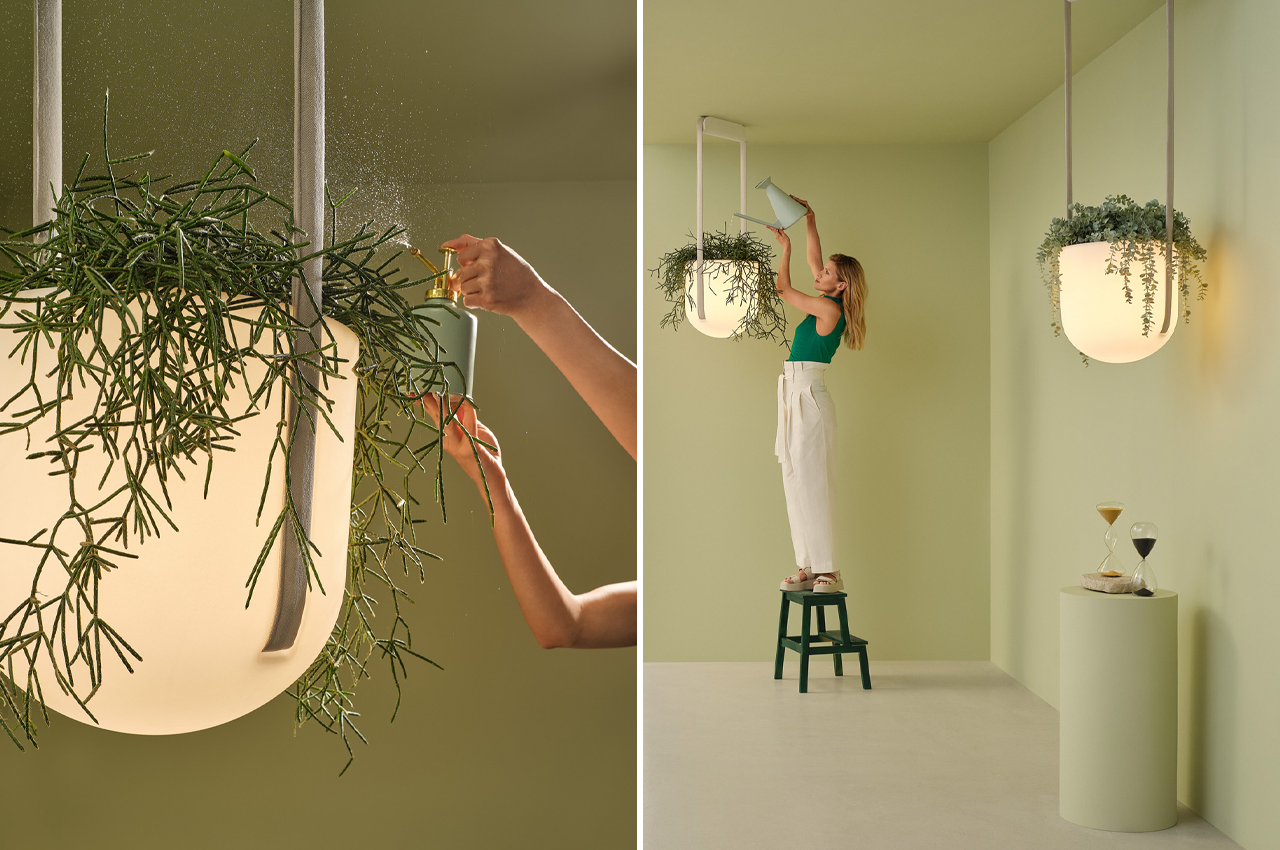
Most commonly in homes across the world, indoor gardens are a form of biophilic design. Interpreting biophilia in a similar way, Jungle, designed by Poland-based KABO & PYDO design studio, is a planter that can hang from the ceiling and also function as a semi-flush mount light fixture.
Why is it noteworthy?
Comprised of only a few parts, the beauty of Jungle lies in the design’s simplicity. Defined by a bulbous, capsule-shaped centerpiece, Jungle is a half-planter and half-light fixture. The capsule-shaped planter emanates a warm, golden light that’s diffused with an opaque body. The opaque body softens the light and accentuates the plant life by offering an unassuming canvas for teeming greenery to drape across.
What we like
- The simple form emphasises the beauty of the plants
- The lamp emits a soft and soothing light
What we dislike
- You need to stand on a stool or a little ladder to water the plants
5. Kosumi’s Wall Organizer and Mess-Free Planter
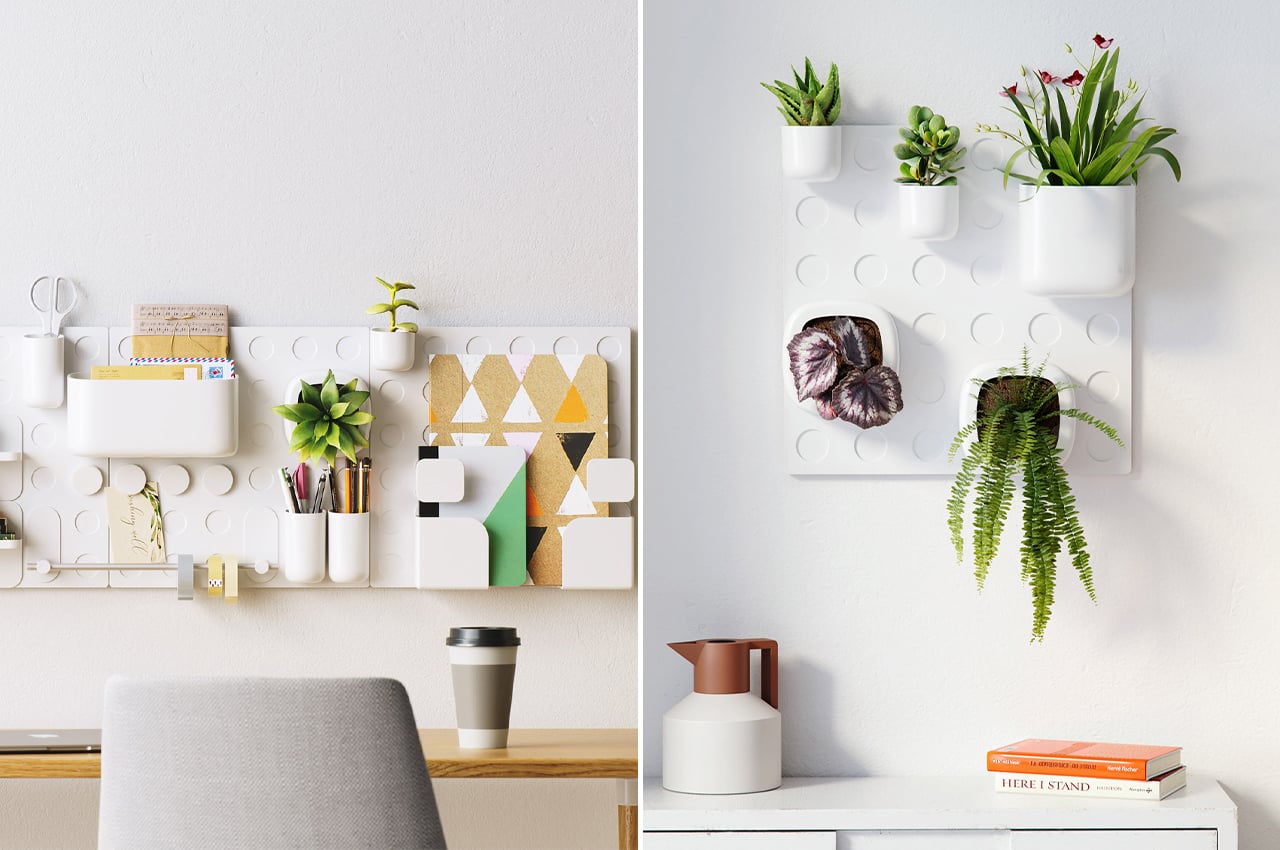
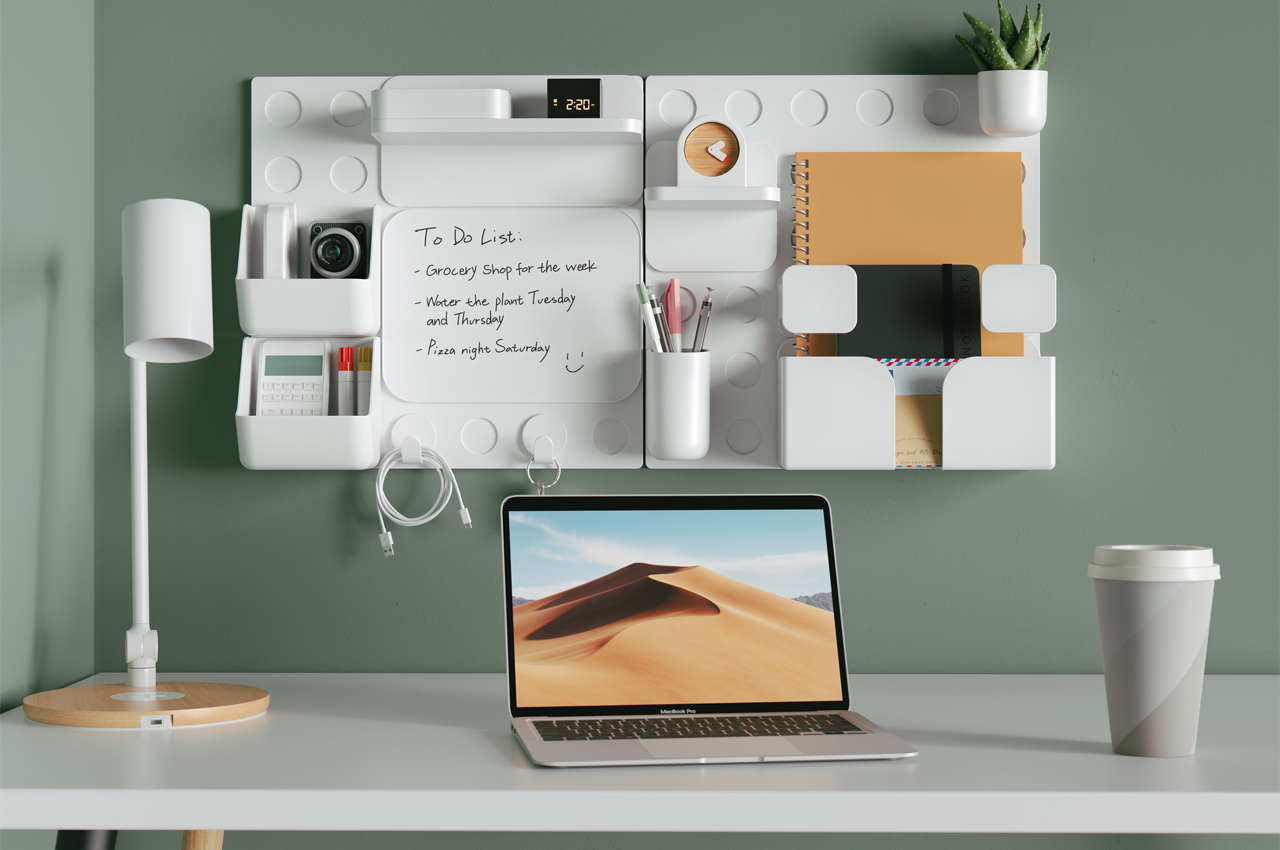
Defined by an assembly system close to LEGO building blocks, Kosumi’s Wall Organizer and Mess-Free Planter come with base grids that attach to walls with 3M strips, requiring no hardware or tools in the process. Once users form their base grid on their chosen vertical surface, the fun begins. Stocked with over 20 different modules, Kosumi’s Wall Organizer and Mess-Free Planter come with hangers, magnetic clips, transparent storage containers, planters, and cubbies.
Why is it noteworthy?
No matter the size of your living space, multi-use furniture helps to keep both the floor and our minds free from clutter. Adding his own multi-functional, organizational WFH design to the mix, Fahredin Kosumi created a Wall Organizer and Mess-Free Planter to form a magnetic, modular garden to mount on any vertical surface.
What we like
- Works like LEGO building blocks
- Impressive storage space
- Entirely recyclable
What we dislike
- We’re not too sure how long the plants would last in such an ecosystem
6. The Pilea Lamp
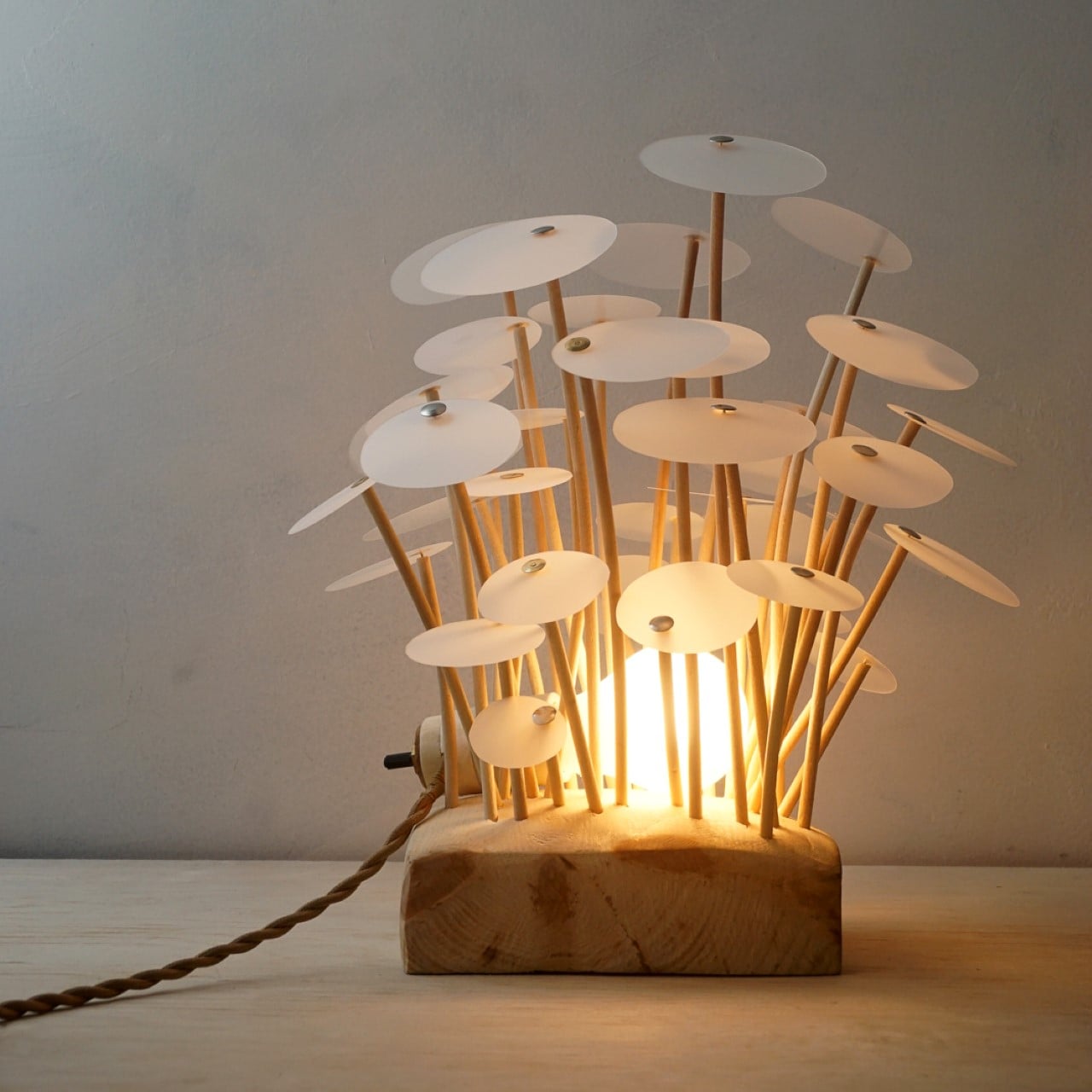
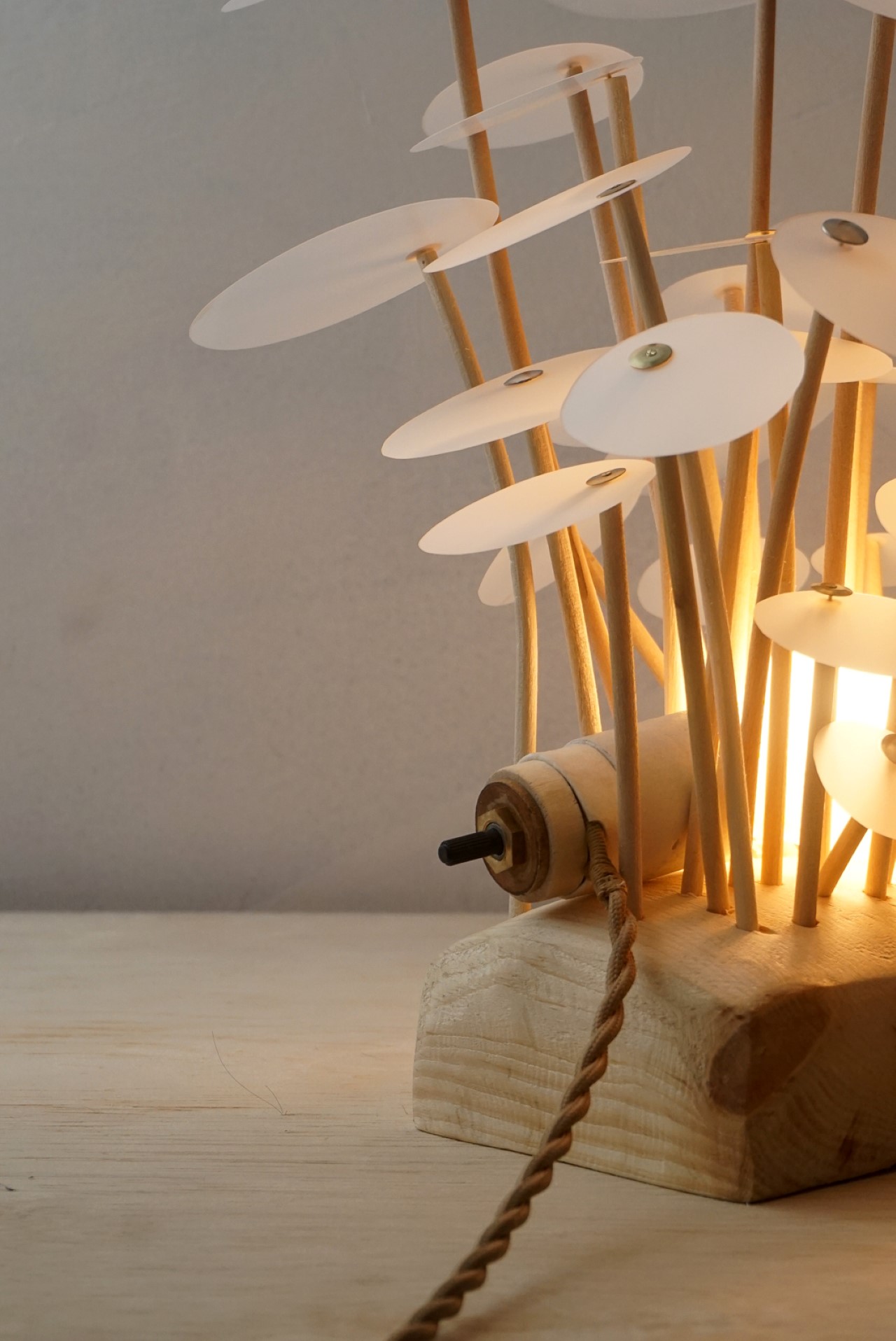
The Pilea Lamp’s design takes direct inspiration from the Chinese money plant, also known as the Pilea plant – an indoor plant often seen in contemporary Asian homes, native to the Sichuan and Yunnan regions of China. It rests on a wooden base, with dowel-style wooden stems sprouting from within. At the end of the stems are the lamp’s leaves, fashioned from diffusion filters pulled from TV screens.
Why is it noteworthy?
There’s a beauty in the Pilea Lamp’s lack of a definite structure. The leaves are haphazardly arranged, with a soft LED bulb just sitting between the stems like a piece of treasure on the forest floor. The way the bulb’s light weaves through the Pilea Lamp’s organic design feels a lot like watching sunlight creep through the tree branches in a forest. The lamp’s organic design has an undeniable sense of warmth and challenges the structured, engineered approach of standard light fixtures and lamp designs.
What we like
- Unique organic form
- Focuses on a nature-inspired design in an unconventional way
What we dislike
- Occupies way too much space for a lamp
7. Flora
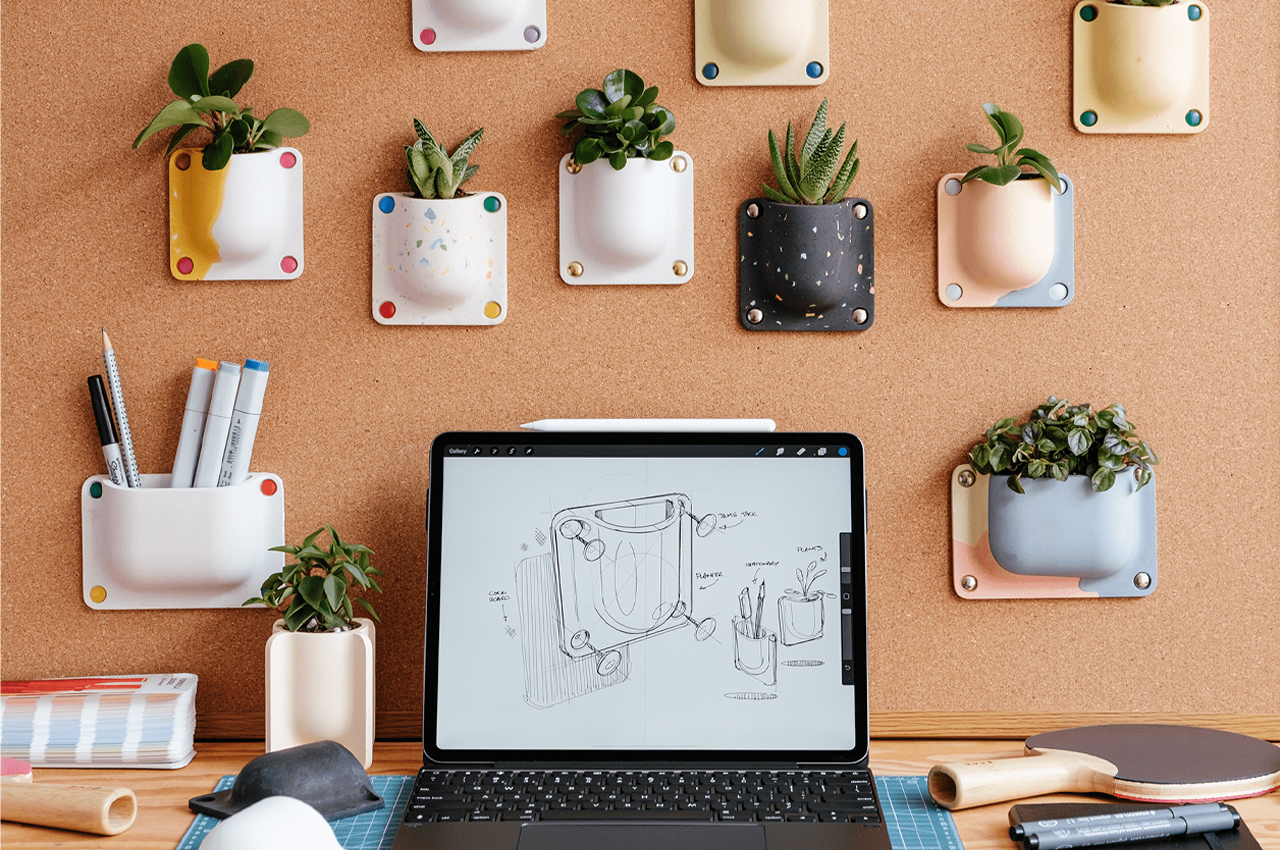
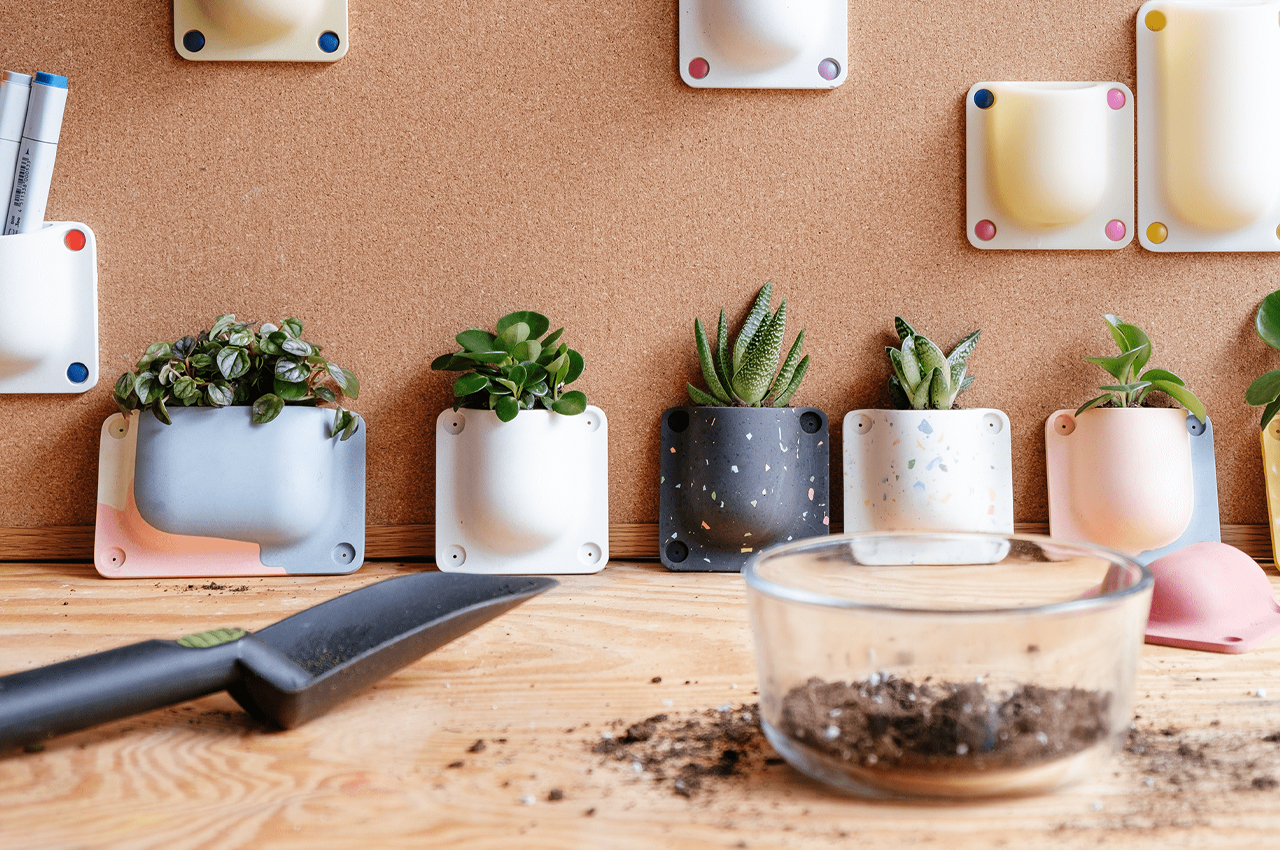
Molded from jesmonite, Flora features specks of color for a modern take on terrazzo, a form of composite material originating in 16th-century Italy. Conceived as a passion project during the lockdown, the designers at Préssec Design first made Floria from concrete casting. Once they achieved their desired look for Flora, they turned it up a notch and gave jesmonite a try.
Why is it noteworthy?
Over recent years, designers have created multifunctional WFH appliances by integrating elements like hidden storage units and organizers into appliances like chairs and desks to make the workday at home feel just as efficient as it feels in the office. Today, designers from Sydney-based Préssec Design have developed Flora, a wall garden system that combines a cork pinboard with hanging planters.
What we like
- Merges a work from home + wall garden design
What we dislike
- Planters could break or crack easily
8. Burmistrova’s smart planter
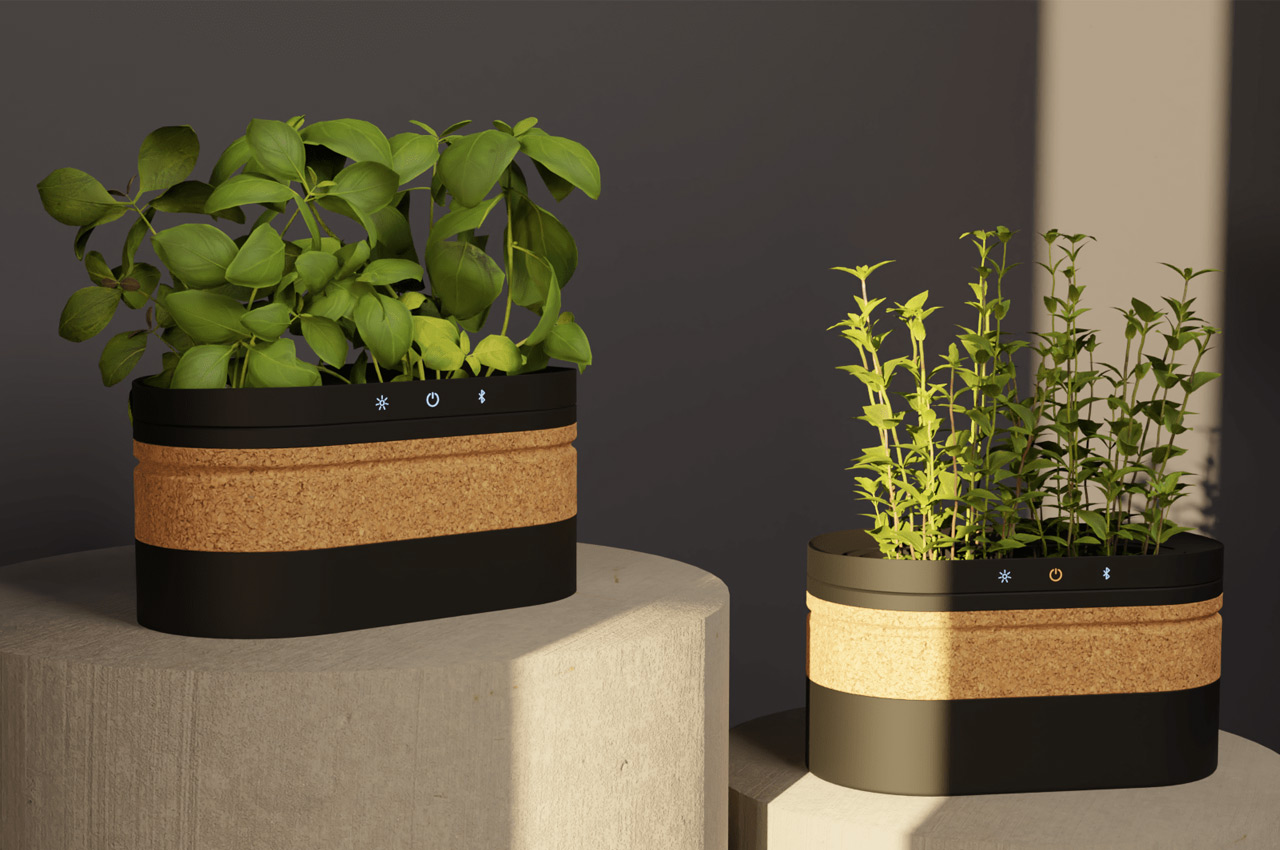
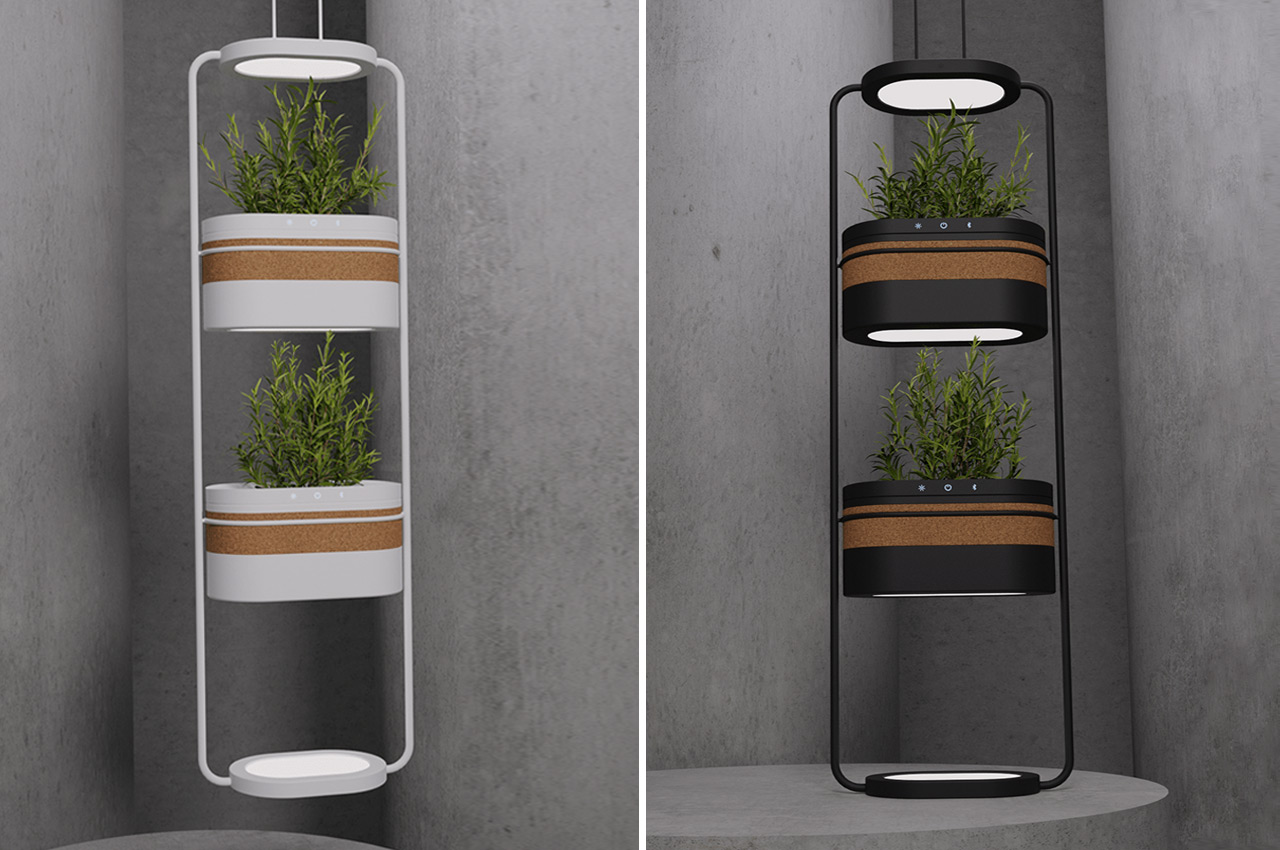
This smart planter can monitor the condition of the air, soil and the plant to ensure it receives the right amount of water and light to grow healthier. Designed with the working population in mind (who have less time to care for their plants, but love to have them in their indoors), the plant pot can artificially control humidity, air temperature, and more to ensure plants do not die during the user’s long absence. This endeavor can be further beneficial for the users, who can through a mobile app, control, monitor and see the plant’s performance from anywhere.
Why is it noteworthy?
Smart planters are available dime a dozen. While some options rely on artificial light to help grow greens in shadier parts of the house, there are others that keep the plants happy and healthy autonomously. In the already crowded, but high-demand segment, designer Evgeniya Burmistrova has introduced a smart flower system with climate control that takes care of the plants independently and leaves you with a green, inviting environment at home.
What we like
- The plant pot can artificially control humidity, air temperature, and more to ensure plants do not die during the user’s long absence
What we dislike
- The aesthetics are unexciting, and quite similiar to other planters on the market
9. The BioCollar
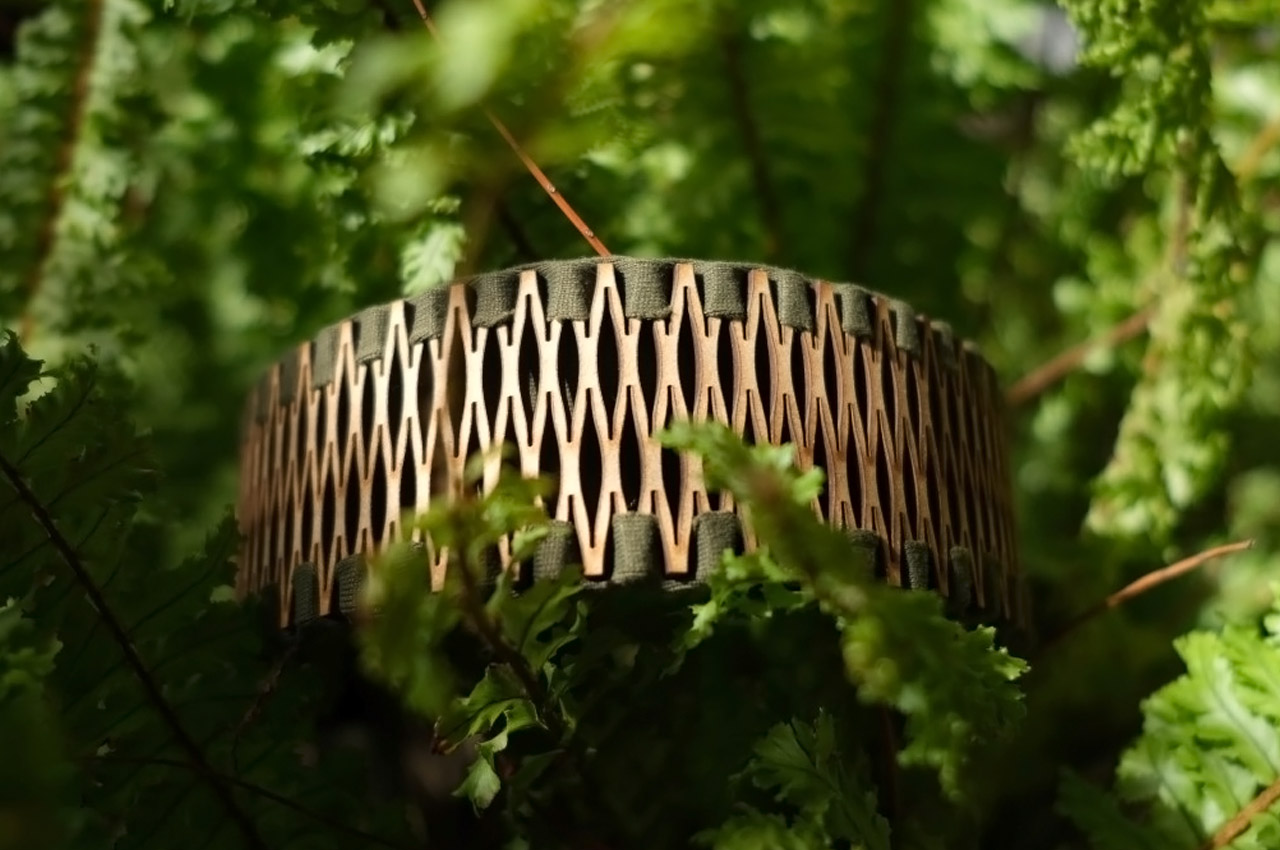

Designed by students at the Copenhagen Institute of Interaction Design, the BioCollar is a wearable that builds empathy between the wearer and the connected plant. When paired with a piece of hardware that goes into the planter, the collar helps you understand the plant’s needs through real-time feedback. It becomes moderately tighter when the plant needs water, gets warm when the plant has too much sunlight, and vibrates when the plant has an infestation. In doing so, the wearable aims at letting the plant easily communicate its needs to you, and enables you to be a better plant-parent.
Why is it noteworthy?
The BioCollar was designed as a part of a larger system called the BioPermit – a service that uses the collar to test prospective plant-buyers to see if they’re empathetic caregivers (a lot like how people are interviewed before they adopt a baby or pet). Obviously, the system is a speculative one, with its main aim being to test future scenarios and see if sensors can be developed that convert plant-needs into haptic feedback. I can definitely see this getting translated into something as effective as a wrist-worn fitness tracker that tracks your plant’s progress, or better still, an app that lets your plant communicate with you!
What we like
- Lets the plant easily communicate its needs to you
What we dislike
- The wearable doesn’t look very comfy to wear
10. The WALTY
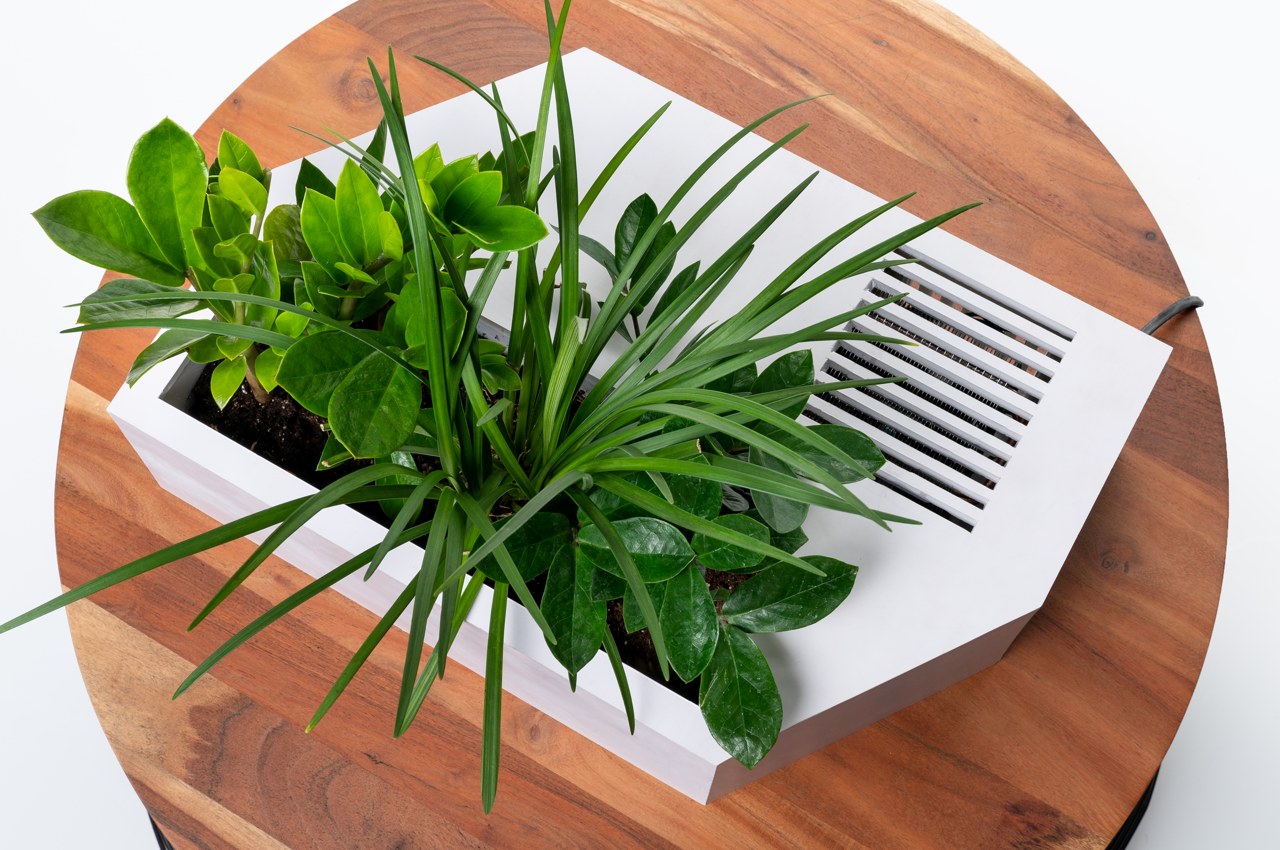

Designed to take the absolute hassle out of watering and taking care of your plants, WALTY gives them the water they need by simply pulling it out of the atmosphere. Because a singular plant can’t generate and capture enough atmospheric humidity as an entire forest, WALTY basically does that part for your plant.
Why is it noteworthy?
Now it might sound borderline magical, but the way WALTY works is similar to a dehumidifier. A dehumidifier pulls moisture from the air using cold plates that force water droplets to condense on them. The droplets then drip down into a reservoir tank, and when it fills up, you simply empty it out. WALTY’s approach is similar, except it uses that very water to keep your plant hydrated… sort of like a win-win.
What we like
- Works similar to a dehumidifier
- Takes care of your plants even when you’re on vacation
What we dislike
No complaints!
The post Top 10 plant-friendly designs to add a touch of green to your home first appeared on Yanko Design.
from Yanko Design

0 Comments